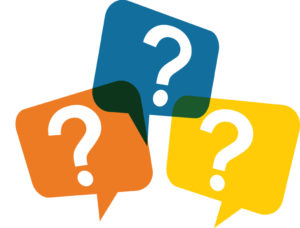PUBLISHED JANUARY/FEBRUARY 2021
Answer by
Guy LeCharles Gonzalez, chief content officer, LibraryPass --

Guy LeCharles Gonzalez
The Chief Content Officer of LibraryPass explains the inconvenient truth about library e-collections.
*A recent Wired
article talked about e-books flying off libraries’ virtual shelves and noted the industry average of $40 for library e-book.
That
Wired article has caused quite a stir despite being a little behind the story! The e-book pricing cited is a little too broad, but it’s on the right track, especially for Big Five e-books, which are what most of these articles tend to focus on.
Jennie Rothschild is a librarian who’s been tackling this subject for a little over a year, and
her post on the inconvenient truth about library e-collections is a very insightful read.
The primary licensing model for e-books is one/user, so if a library only has one license for an e-book, only one patron can borrow it at a time, just like print. The ideal holds ratio (patron requests:available copies) is typically 3:1 to limit the amount of time someone has to wait to get a book, but even the most well-funded systems have difficulty maintaining that ratio for the big bestsellers. It’s not uncommon for really popular titles to have waiting lists extending a few months, which translates to a 6:1 holds or worse.

The other difference is in pricing; libraries can acquire print books at wholesale prices and own them in perpetuity—or sell them off when it’s time to weed their shelves—while e-books are licensed at significantly higher prices (often three to five times the consumer price). All of the Big Five and a few other midsize publishers have variations on metered access where the license expires, typically after 26 or 52 checkouts (generally considered the “fairest” form of metering), or one to two years regardless of how often they’re checked out. When the license expires, libraries have to pay to license it again under whatever the current terms are at that time.
Because digital content is still a smaller percentage of libraries’ overall collections budgets, most digital acquisition is driven by patron demand, which is predominantly bestsellers—mostly Big Five and licensed via metered access. In order to meet the demand while keeping holds ratios as low as possible, some libraries are putting as much as 25% of their digital budgets toward re-licensing popular e-books, limiting their ability to acquire midlist, small press, and indie authors in digital formats. When you think about the titles that stay on the bestseller lists for months, like
Becoming or
Where the Crawdads Sing, they eat up a lot of digital content budgets, crowding out even the Big Five’s own midlist, never mind indies.
Indies that price their e-books similar to the Big Five and opt for metered access are basically pricing themselves out of the library market unless they have a big bestseller that’s getting a lot of national attention to drive demand, or have a compelling local angle. Those with lower prices and/or offering perpetual access are more likely to see librarians take a chance on them—whether to fill gaps in popular genres, or be positioned as readalikes for popular titles they can’t keep up with demand for.
The standard, predominant licensing model is one book/one user. The expensive license does not mean a library can lend a single copy to multiple users at the same time. The Internet Archive’s National Emergency Library unfortunately caused a lot of confusion for people, conflating their rogue approach with traditional libraries.
There are other models publishers can offer, though, like cost-per-circulation where libraries can set a budget cap and offer a wider selection of titles; or unlimited, simultaneous access where royalties work more like streaming—but you’ll rarely see them used for front-list or popular backlist, and almost never from the Big Five publishers.
OverDrive supports a variety of models, but it’s up to individual publishers to offer them, while some other platforms specialize in alternative models and only work with publishers that offer them, resulting in smaller, more targeted digital collections, like
Hoopla,
Biblioboard, or
LibraryPass.
There’s a lot of nuance to it that my explanation doesn’t cover—which is partly why media coverage always gets some of it wrong—so the best perspective would really come from a library vendor that supports multiple models, or the alternative model you’re most interested in. Barring that, however, I hope this is helpful.
IBPA and the Panorama Project
In April 2020, IBPA joined
Panorama Project’s cross-industry Consumer Research Committee to help spearhead an “
Immersive Media & Reading 2020” consumer survey that will measure immersive media consumption and buying behaviors across key formats and platforms. Guy LeCharles Gonzalez served as committee lead until October 2020.
Guy LeCharles Gonzalez has worked in the media business for over 25 years and is currently the chief content officer for LibraryPass. Previously, he was the project lead for the Panorama Project.
Learn more about this topic:
Library